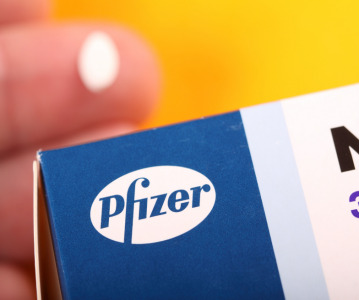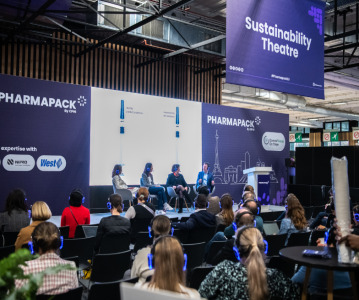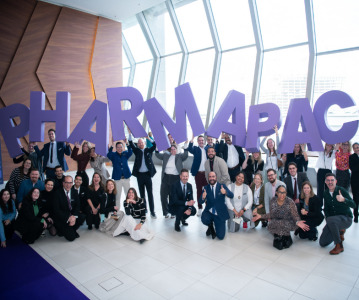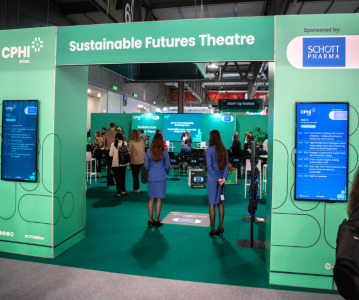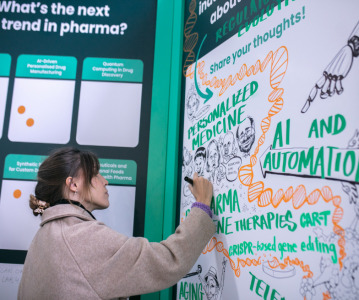How to Commercialise an Advanced Therapy: Connect to Frankfurt on-demand
.png)
In this Connect to Frankfurt session, Andrea Zobel, Senior Director, Personalized Supply Chain at World Courier (Berlin Germany), Melissa Lattanzi, VP Emerging Therapies at AmerisourceBergen (King of Prussia, USA), and Hans-Peter Scherzer, Customer Success Project Manager at World Courier (Tyrol, Austria) come together to discuss the how advanced therapies – namely, cell and gene therapies – require new and robust pharmaceutical logistics when orchestrating their commercialisation and bringing the therapeutic to patients.
As part of our conference track on Future Therapies, learn how partnering with the right third-party logistics partner can streamline the process of developing, manufacturing, and commercialising cell and gene therapy products in a high-stakes environment.
New therapies require new logistics
Since the first allogeneic hematopoietic stem cell transplant in the 1950s, research interest in cell and gene therapies has continued to increase. Breakthroughs in innovation such as CAR T cell therapies and induced pluripotent stem cells (iPSCs) have expanded the field of cell and gene therapies to new potentials.
However, with new therapies comes new challenges in their manufacturing, transport, and administration. Cells, tissues, vectors, and viruses, essential components of various cell and gene therapy products, require specific conditions in order to remain viable for use. Zobel emphasises the temperature requirements for such components, all of which require below-freezing temperatures for long-term stability. At ambient temperatures, cells, tissues, and viral vectors remain viable for only a few days at most. With such storage requirements, Zobel underlines the importance of a connected ecosystem throughout the process of bringing a therapeutic to commercialisation and to the intended patients.
Orchestrating a streamlined process
Zobel hands the session over to Lattanzi to discuss certain considerations to take when implementing a connected ecosystem. Beginning with patient enrolment, Lattanzi goes through each step of a sample orchestration platform. From researching and screening patients to booking and completing apheresis appointments, each step takes into consideration the relevant coordination and communication requirements to ensure streamlined progress. Lattanzi pays particular attention to the transition of information and therapeutic components between different stakeholders, all of which, she indicates, require the services of a reliable courier service.
Throughout the different phases of a therapeutic’s lifecycle, Lattanzi draws attention to the value of considering the transmission and transportation of data, information, and live cultures at each stage. From clinical phases I and II straight through to the commercial stage, Lattanzi reiterates the significance of proper storage facilities and transportation readiness to ensure the supply chain remains uninterrupted when bringing therapeutics to their intended patients.
Zobel also lists three new requirements in pharmaceutical logistics for cell and gene therapies, which include time criticality, chain of custody, and cryogenic logistics. The resulting orchestration logistics thus depend on how components are shipped – fresh or frozen? Zobel establishes different areas of focus when planning cell and gene therapy shipments, including sample donations, vector transportation, therapy manufacturing, and patient monitoring, each requiring their own supply chain logistics. Getting ahead of these requirements and providing a network of appropriate facilities, most notably cryopreservation facilities, will ensure the delivery of an increasing number of cell and gene therapeutics to those who need them.
A complex process
While circular graphs may show the orchestration of supply chain logistics in a clear-cut manner, the execution of the process is much more complex. Scherzer provides a first-hand account of how complex process of bringing cell and gene therapies to patients can be. Challenges he has faced include the onboarding process of a DV10 shipper, which in one instance arrived damage to the site. While healthcare providers expected a high-quality container provided by a partner that promises the delivery of therapeutics in perfect and viable conditions, it provided a chance for Scherzer and his team to think outside the box in coordinating and delivering solutions for a scenario that had not been considered. Each situation Scherzer describes all go back to the importance of having robust operational logistics and communication to prepare for unexpected challenges. Expect the unexpected!
Likewise, Lattanzi discusses the challenges of therapeutic distribution, especially to those in hard-to-reach areas. She emphasises a two-fold approach towards distribution: physical product distribution (i.e. getting the product to patients) and ensuring that payment can be provided for the product. Thinking about a product’s value proposition, a pricing strategy, and considering a product’s affordability are challenges that providers should keep in mind when bringing cell and gene therapies to the commercial stage.
Zobel closes out with an overview of logistic solutions that can be provided by third-party partners such as AmerisourceBergen and World Courier, where certain practices can be standardised and others adjusted to meet the needs of their customers and therapeutics.
Related News
-
News Pfizer may shift production back to US under Trump pharma tariffs
At the 45th TD Cowen annual healthcare conference in Boston, USA, Pfizer CEO Albert Bourla outlined the potential for Pfizer to shift its overseas drug manufacturing back to the US as pharmaceutical industry players weigh their options against Presiden... -
News Women in Pharma: Connecting accessible pharma packaging to patients – a Pharmapack Special
Throughout our Women in Pharma series, we aim to highlight how CPHI events encourage discussions around diversity, equity, and inclusion initiatives in the pharmaceutical industry. -
News CPHI Podcast Series: Packaging expert perspectives at Pharmapack 2025
This month's podcast episode sounds a little different, covering the latest event in Paris – Pharmapack 2025. Digital Editor Lucy Chard speaks to several experts direct from the floor of the show, bringing you right in on the action.&nbs... -
News Closing 2024 with Editors' picks of top articles from the past year
Coming to the end of 2024 and it’s certainly been a busy year, for CPHI and for the rest of the pharmaceutical and healthcare industry. Topics of conversation throughout the last 12 months have been varied, touching on the technical, to the polit... -
News SCHOTT Pharma’s sustainable journey with CPHI
Sustainability is of paramount importance in the pharmaceutical industry. See how a recent partnership between CPHI and SCHOTT Pharma has helped to highlight and accelerate their sustainability journey to reach global goals. -
News CPHI Podcast Series: Investing in a vision for the future of life sciences
In this episode Lucy Chard is joined by Rajiv Khatau to discuss the importance of looking into new therapeutic areas and some of the more niche areas of pharmaceuticals, and investing in the future of the industry. -
News Lessons from CPHI Milan 2024: Sunny Intervals for Pharma Manufacturing?
As the 2024 CPHI conference wrapped up in Milan, we caught up with L.E.K. Consulting – a global strategy consulting firm with deep expertise in pharma manufacturing – to discuss evolving market perspectives and business outlook. -
News Women in Pharma: Reflections from Behind the Scenes
In this instalment of our monthly series, the team that brings you the Women in Pharma series each month sits down for a heart-to-heart on what the series means to them, and how they hope to continue their work in the future.
Recently Visited
Position your company at the heart of the global Pharma industry with a CPHI Online membership
-
Your products and solutions visible to thousands of visitors within the largest Pharma marketplace
-
Generate high-quality, engaged leads for your business, all year round
-
Promote your business as the industry’s thought-leader by hosting your reports, brochures and videos within your profile
-
Your company’s profile boosted at all participating CPHI events
-
An easy-to-use platform with a detailed dashboard showing your leads and performance

